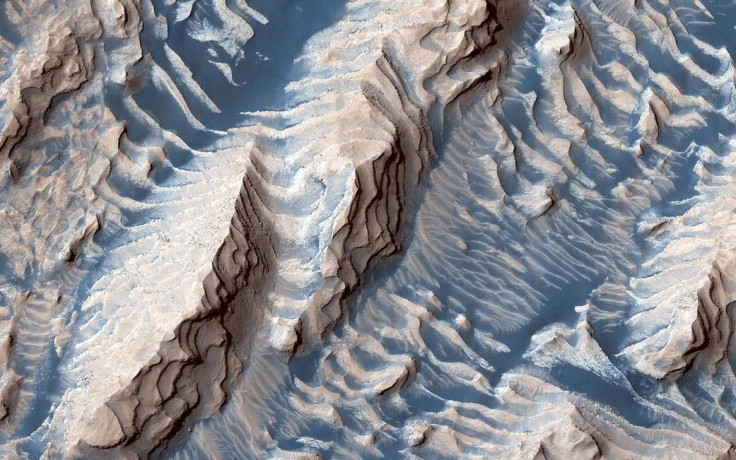NASA Photo Captures 'Worm Burrows' On Planet Mars; Sign Of Alien Life?

When it comes to finding life outside Earth, planet Mars holds a lot of interesting leads.
Through the years, scientists have discovered some important elements that all point to the possibility that there could be life on the Red Planet. NASA scientists, for example, discovered that there’s liquid water beneath the planet. The NASA rover Curiosity, on the other hand, discovered an unusual amount of methane gas a few months ago which led experts to believe that there could be life hiding under Martian rocks.
Alien theorists and UFOlogists on the other hand, also give their own theory of life on Mars by detecting odd shapes on the Red Planet that spark controversies. These space enthusiasts have found animal shapes, fossils and even humanoid figures from the surface of Planet Mars and assume that they are either remnants or sculptures left by an ancient alien race.
It’s easy to understand why they would think so -- Mars is filled with odd structures that make people believe there could be life hiding somewhere. For example, a NASA photo taken a few years back show what looked like worm burrows in one region of the planet.
The “burrows” look like underground tunnels where a slithering creature might be living underneath the Martian surface, a place most likely where scientists expect to find life on the Red Planet. But according to a report from CNET, the image is nothing more than a well-photographed detail of Mars’ southern region.
Per the report, the burrow-like surface is actually a Martian landscape that looks a bit like an ant farm. "The polar cap is made from carbon dioxide (dry ice), which does not occur naturally on the Earth. The circular pits are holes in this dry ice layer that expand by a few meters each Martian year," NASA said about the land formation.
The southern pole of Mars is very cold and is said to snow dry ice throughout the year. It can also reach frost points of -200 Fahrenheit (-130 Celsius).
At any rate, looking for life beneath the surface of Mars is a good strategy for finding alien species on the Red Planet. Mars is known for its weak atmosphere that makes the whole planet have dangerous levels of radioactivity and since it is also very cold, it would be understandable if any signs of life would move underground.
© Copyright IBTimes 2025. All rights reserved.





















